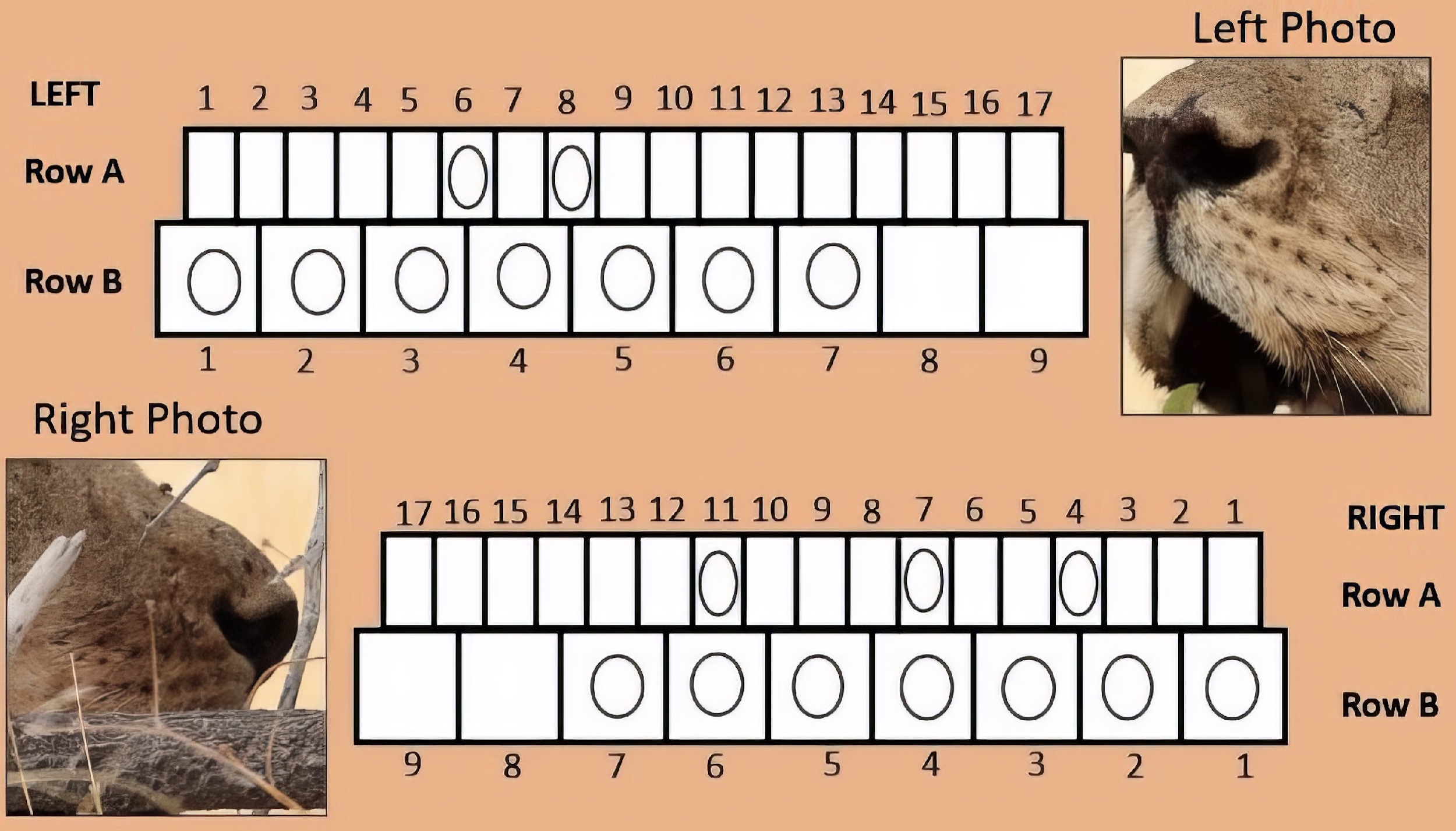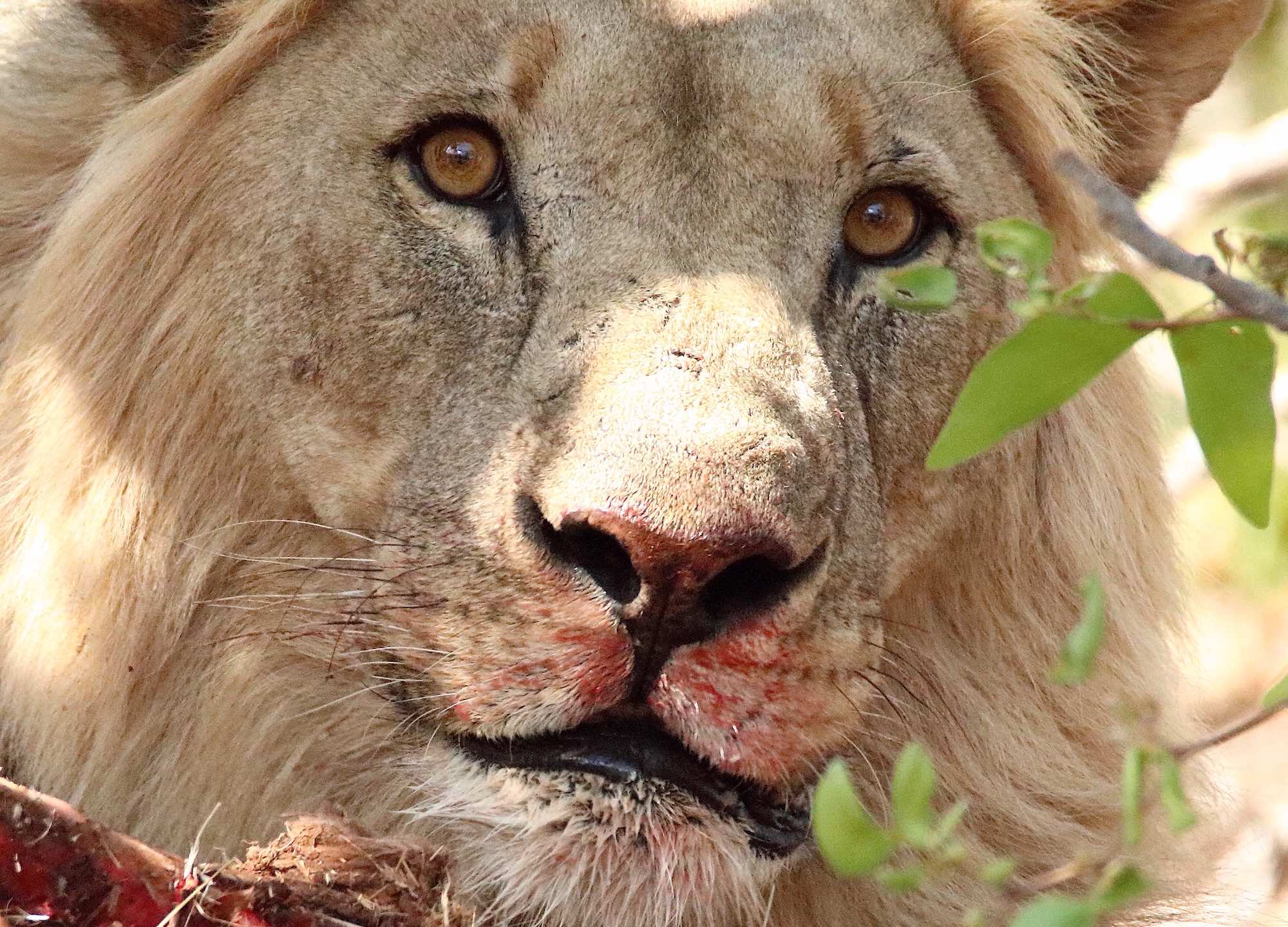
First-ever systematic lion population survey in northwest Namibia
8th November 2023
8th November 2023
The lions of Namibia's Kunene Region are sought after by tourists, but they are a local threat to livestock farming, and are still largely unresearched in terms of their ecology and ranging behaviour. Though lions in Kunene have been monitored for more than twenty years, it may come as a surprise that the population has not been systematically counted throughout its range – until now. It is less surprising when one realises that the lion range in Kunene covers more than 51,000 km2 of mountainous desert landscape. Counting any cryptic species in this huge area is no easy task, and it took a massive team effort of nine weeks to finally produce an accurate estimate of 57-60 adult lions.
From 6 November 2022 to 6 January 2023, four teams of 45 trained surveyors traversed thousands of kilometres of communal and government-managed land in the Kunene Region to find and individually identify all free-ranging adult lions in the area. The team included staff from Namibia's Ministry of Environment, Forestry and Tourism (MEFT), in partnership with the Lion Rangers, the Namibian Lion Trust and field staff from Integrated Rural Development and Nature Conservation (IRDNC). This survey will provide decision makers with baseline information for management, set a standard for future surveys and strengthen support for community-centred lion conservation on communal land.

The population survey was designed by researchers in consultation with MEFT staff and drew heavily on the expertise of the Lion Rangers and other local conservationists. The survey focused on an area of 41,000 km2 of the historical 51,000 km2 due to recent reductions in lion range primarily caused by the effects of drought and ongoing human-lion conflict. This area, known as the core lion range, encompasses eleven communal conservancies (Anabeb, Doro !Nawas, Ehi-rovipuka, ǂKhoadi-ǁHoas, Omatendeka, Orupupa, Puros, Sesfontein, Sorris Sorris, Torra, and Tsiseb), three tourism concessions (Etendeka, Hobatere and Palmwag) and the Skeleton Coast National Park from the Hoarusib River in the north to the Huab River in the south. The survey covered all accessible lion habitats in this core range.
Drawing on the local ecological knowledge of the Lion Rangers and MEFT regional staff, four teams moved across the landscape using routes roughly parallel to each other from north to south. The teams started around the Hoarusib River in the Puros Conservancy and ended in the Ugab River course which forms the boundary between the Kunene and Erongo regions. From there the teams turned eastward and moved up the escarpment to the western border of Etosha National Park. Throughout the survey teams relied heavily on movement data from collared lions to ensure that all areas where lions are known to roam were covered. Currently, there are 47 working GPS/satellite collars fitted to lions across Kunene.
Each time a team found lions, they attempted to uniquely identify each adult lion by its whisker-spot patterns. These spots, visible below a lion's whiskers on both sides of its face, have been shown to be unique to each individual in small to medium-sized populations, and they remain unchanged throughout a lion's adult life. Using high-powered zoom lenses and digital cameras, the survey teams captured high-quality photos of both sides of the face of 54 of 57 adult lions that clearly showed their whisker-spot patterns. The remaining three could not be photographed closely enough due to the presence of small cubs, but they were individually identified on video, which was confirmed through extensive monitoring. The resulting high-quality photos, along with available life history of each individual, are being used to create individual identification cards for each lion. These ID cards are disseminated to Lion Rangers and researchers, so stakeholders can better monitor lions in their areas.

After careful analysis of the data collected by all ground teams, the final estimate came to 57-60 adult lions, plus 14 cubs under one year of age. While we counted 57 lions, given our sampling effort and pre-existing knowledge of lions in the area, we are aware that a further three lions may exist – as no deaths have been confirmed for these known individuals. Our estimate is approximately 45-60% lower than previous estimates. Those estimates, however, were based primarily on expert opinion.
At 0.11 lions/100 km2, lion density in Kunene is the lowest recorded for stable, free-ranging lion populations in Africa. This is to be expected given that arid and semi-arid environments support fewer prey animals than wetter parts of the continent. Lions are not uniformly distributed across the landscape. No lions were found in the southern survey area which covered the Doro !Nawas, Sorris Sorris and Tsiseb conservancies, and no lions were found in Skeleton Coast National Park south of the Huab River, although lions were previously known to reside in those areas. Follow-up monitoring around the Ugab River and Brandberg mountain confirm the absence of lions there – but a small group may exist near the Doros Crater. Continued monitoring is focusing on this area.
A crucial finding is that the lion population appears to be healthy and has stabilised after the apparent recent decline. This assessment is based not solely on the number of individuals, but also on the relatively good physical condition of all individuals identified, as well as on the sex ratio of the population (36 females to 21 males, or 1:0.58) and the number of cubs. This small lion population may be healthy, but it still faces several threats to its long-term survival which must be addressed continuously.


Human-lion conflict remains the primary driver of adult lion mortality in Kunene. Recently completed social surveys among communal residents indicate low levels of tolerance for living with lions. The relative youth of males within the population (10 of 21 were estimated below five years of age) points to the possibility that many will not reach full adulthood: in Kunene as many as 50% of male lions die before six years of age. Finally, declines in available prey over the past decade due to a severe drought lasting several years mirror declines in the lion population. Continuous monitoring of the lion population as well as increased monitoring of prey species is needed to determine possible management interventions.
Looking forward, follow-up population surveys and monitoring will continue to improve our collective understanding of the northwestern lion population. Cautious management is required, given the precarious state of this population of lions that lives entirely in arid and semi-arid areas alongside farmers. The region's declining prey base is cause for concern. Further research and conservation action are needed to promote the recovery of these species, for the benefit of people and lions. Improving local tolerance for living with lions to limit human-lion conflict is essential. Namibia's tourism industry can play a role in this by contributing to rural livelihoods, showing that high levels of international interest in Namibia's lions can bring benefits to the Namibians living alongside them.

For articles on similar topics, please click one of the following options:
For more great articles from Conservation Namibia see below...
Conservation Namibia brought to you by:
We use cookies to monitor site usage and to help improve it. See our Privacy Policy for details. By continuing to use the site, you acknowledge acceptance of our policy.











